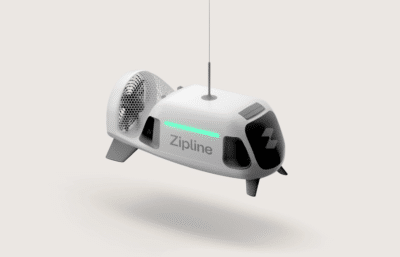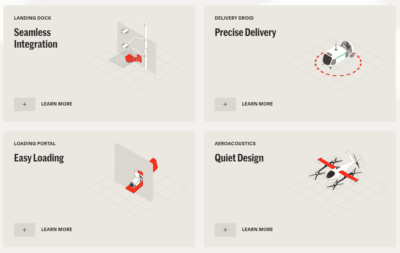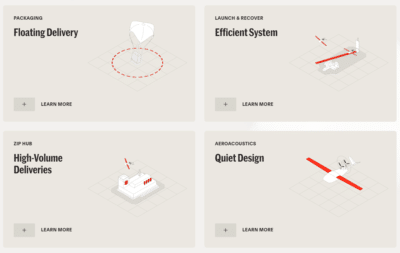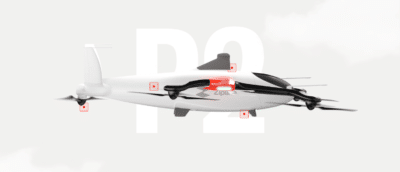In the ever-evolving world of technology, the concept of drone delivery has captured the imagination of many. This futuristic idea promises to revolutionize the way we receive goods, making deliveries faster, more efficient, and accessible even in the most remote areas.
Among the myriad of attempts to make drone delivery a reality, one company stands out for its groundbreaking success: Zipline. This post delves into why Zipline’s approach to drone delivery has been the only one to achieve significant and sustainable success, marking a pivotal moment in the evolution of logistics and delivery services.
IMAGE: ZIPLINE
The Rise of Drone Delivery
The concept of drone delivery emerged as a promising solution to modernize and streamline the delivery process, aiming to transform how goods are transported globally. By leveraging drones, companies envisioned a future where deliveries are not only faster but also more accessible, especially in hard-to-reach areas.
The vision extended to reducing road traffic and minimizing the environmental impact of delivery services, offering a cleaner, more efficient alternative to traditional methods.
However, transitioning from concept to reality proved challenging. The early excitement met with a series of obstacles that many companies struggled to navigate.
The complex web of regulatory compliance required to ensure safe airspace integration, combined with the technological hurdles of developing drones capable of carrying payloads over long distances reliably, presented significant barriers. Additionally, the need for scalable solutions that could be deployed effectively across different regions added another layer of complexity.
Zipline emerged against this backdrop, not merely as another company testing the waters of drone delivery but as a pioneer with a clear vision and a robust solution. By focusing on the critical sector of healthcare logistics, Zipline demonstrated the impactful potential of drone delivery.
Their success in delivering medical supplies, including blood and vaccines, to remote areas showcased not just the feasibility but the real-world benefits of their approach. In doing so, Zipline not only addressed the logistical challenges head-on but also highlighted the transformative power of drone delivery in making healthcare more accessible and efficient.
Their model of operation, emphasizing reliability, scalability, and a deep commitment to making a tangible difference, sets Zipline apart as the only drone delivery company to have achieved such significant and sustainable success in this innovative field.
Zipline’s Unique Approach
Zipline launched its first commercial service in Rwanda in 2016, focusing on the delivery of medical supplies, including blood and vaccines, to remote areas. What sets Zipline apart is its robust, reliable, and remarkably efficient system, which has delivered more than 200,000 medical items to date, including life-saving supplies during critical situations.
Here’s why Zipline’s model is a cut above the rest:
- Precision and Reliability: Zipline’s drones are designed to deliver packages with pinpoint accuracy, even in adverse weather conditions. This precision ensures that critical supplies reach their destination safely and on time.
- Scalability and Adaptability: The company has successfully scaled its operations beyond Rwanda, expanding into other countries like Ghana, Nigeria, and the United States. Zipline’s ability to adapt its technology to different regulatory and geographical landscapes is a testament to its robustness and scalability.
- Impactful Mission: Zipline has prioritized making a tangible impact, especially in healthcare. By focusing on delivering medical supplies, Zipline addresses a critical need, saving lives and demonstrating the potential of drone delivery to make a real difference.
IMAGES: ZIPLINE
The Technology Behind the Success
Central to Zipline’s groundbreaking achievements in drone delivery is an innovative suite of technologies that propel their drones, known affectionately as “Zips,” to the forefront of the delivery industry. These unmanned aerial vehicles harness advanced autonomy to navigate vast distances, reliably executing deliveries across diverse and often challenging terrains.
Equipped with state-of-the-art navigation systems, Zipline’s drones can weather a variety of conditions, from gusty winds to unexpected precipitation, ensuring that vital supplies consistently reach their destinations with precision.
The essence of Zipline’s operational excellence lies not just in the drones’ ability to traverse long distances independently but also in a uniquely designed launch and recovery mechanism. This system, characterized by its efficiency and low requirement for infrastructural support, enables Zipline to establish its drone delivery service in regions lacking conventional logistics networks.
The launch system catapults the Zips into the air with precision, while the recovery process is meticulously calibrated to ensure drones are safely retrieved, ready for their next mission. This innovative approach to deployment minimizes the need for extensive groundwork or modifications to existing landscapes, facilitating rapid and scalable solutions to drone delivery challenges.
By integrating these technological advancements, Zipline transcends traditional delivery limitations, offering an unparalleled model of efficiency, reliability, and adaptability. This solid technological foundation enables Zipline to lead the drone delivery industry, showcasing the transformative potential of drones in addressing critical delivery needs across the globe.
Regulatory Hurdles and Safety Concerns
Navigating the complex landscape of aviation regulations and safety protocols, Zipline has set a high bar for drone delivery services worldwide. The integration of drones into the airspace presents a unique set of challenges, requiring meticulous planning and continuous dialogue with regulatory authorities.
Zipline’s proactive approach in collaborating with governments and aviation bodies has been instrumental in crafting policies that accommodate the innovative nature of drone delivery while ensuring public safety and compliance with stringent aviation standards.
This collaborative effort involves extensive testing and demonstration of the safety features inherent in Zipline’s technology, highlighting the reliability of their drones in various operational scenarios.
By emphasizing safety through technology, Zipline addresses potential risks, such as mid-air collisions and navigational errors, ensuring that their drones operate harmoniously within the ecosystem of manned aircraft and other airspace users.
The company’s success in obtaining necessary approvals and certifications underscores its commitment to safety and regulatory adherence. Through its pioneering work, Zipline not only advances the cause of drone delivery but also contributes to shaping a regulatory framework that supports innovation while safeguarding the interests of all stakeholders.
This delicate balance between innovation and safety regulations has propelled Zipline to the forefront of drone delivery services, making it a model for how companies can navigate the complexities of integrating new technologies into regulated spaces.
The Future of Drone Delivery
Zipline’s journey from a visionary concept to a tangible, impactful service has not only redefined the potential of drone delivery but also illuminated a path forward for the industry at large. Their remarkable model demonstrates the transformative power of combining innovative technology with a clear, mission-driven approach.
As the global community becomes increasingly aware of the benefits drone delivery can bring, especially in terms of accessibility, efficiency, and environmental sustainability, the demand for such services is set to rise dramatically.
The trajectory of drone delivery points towards a future where these services are not just an exception but a norm across various sectors, extending beyond healthcare to include e-commerce, emergency response, and environmental monitoring.
The lessons drawn from Zipline’s operations serve as a guiding framework for emerging players in the field, emphasizing the importance of technological excellence, strategic partnerships, and a steadfast commitment to regulatory compliance and community engagement.
As drone delivery ventures into new territories and applications, the role of continuous innovation and adaptation becomes ever more critical. This evolution will likely spur further advancements in drone technology, including enhanced autonomy, improved energy efficiency, and increased payload capacities, facilitating a wider range of delivery services.
The future envisioned by Zipline’s pioneering efforts is one where drone delivery systems significantly impact global logistics, making services more accessible, reducing the environmental impact of delivery networks, and ultimately contributing to a more connected and efficient world.
With a foundation laid by trailblazers like Zipline, the potential for drone delivery to reshape our delivery ecosystems and how we think about transporting goods is boundless.
For a deeper understanding of how drone delivery continues to evolve and the regulatory frameworks shaping its development, resources such as the Federal Aviation Administration and The World Economic Forum offer invaluable insights into the emerging trends and future directions of this exciting industry.
Conclusion
In an age where innovation is often met with skepticism, Zipline stands as a beacon of what is possible. The company’s success in drone delivery underscores the importance of marrying technology with mission-driven goals.
As Zipline continues to expand its operations and impact, it sets a standard for what drone delivery can achieve, offering a glimpse into a future where deliveries are not just faster and more efficient but also more inclusive and impactful. With Zipline leading the way, the sky is indeed the limit for drone delivery.
IMAGE: ZIPLINE
If you are interested in even more technology-related articles and information from us here at Notilizer, then we have a lot to choose from.




COMMENTS